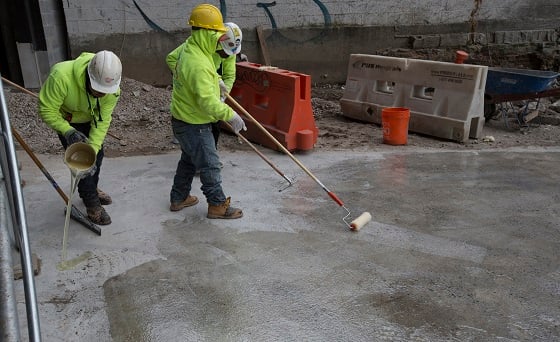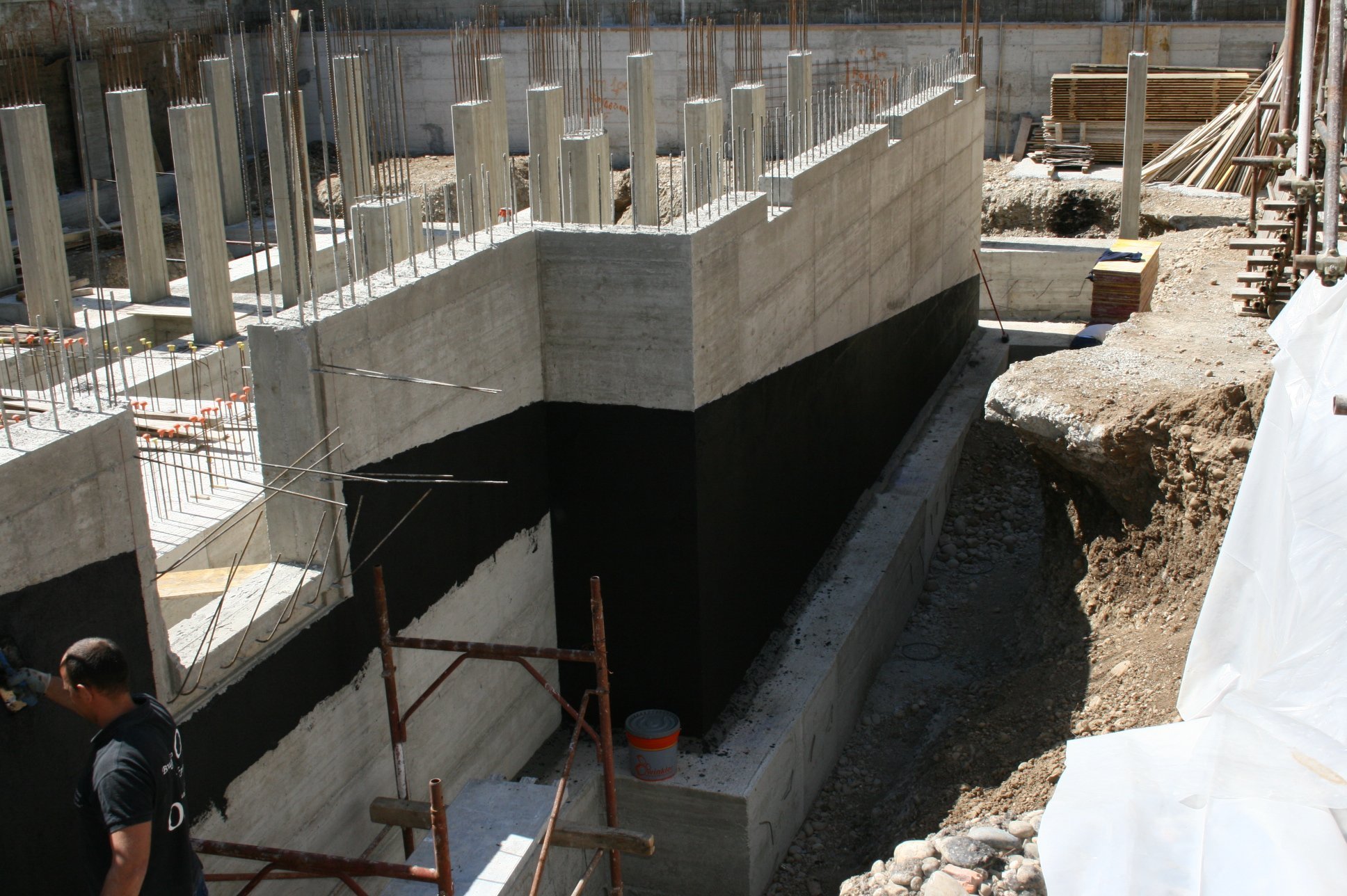How Landscape drainage Omaha Preserves Your Foundation from Heavy Rain
Wiki Article
Kinds of Waterproofing: Exploring the Various Approaches and Their Applications
Waterproofing is a vital aspect of building and upkeep. It shields frameworks from the detrimental effects of water damage. There are a number of techniques offered, each with its unique applications and advantages. From membrane layer systems to cementitious solutions, understanding these choices is necessary for efficient execution. The selection of waterproofing method can considerably affect durability and durability. Discovering these numerous techniques exposes their distinct advantages and potential obstacles, motivating more factor to consider of optimal solutions.Membrane Waterproofing Solutions
Membrane layer waterproofing systems function as an important obstacle against water breach in various structures. These systems commonly contain thin sheets made from products like rubber, polycarbonate, or bitumen, which are put on surface areas to avoid dampness penetration. They can be mounted above or below quality and are specifically efficient in areas prone to high water direct exposure, such as basements, roof coverings, and foundations.The installment procedure entails cleansing the substratum, applying adhesives or primers, and precisely suitable the membrane layer to guarantee complete protection. Membrane layer systems can be either totally stuck, mechanically connected, or laid loose, relying on the certain requirements of the task. They provide resilience and adaptability, fitting architectural movements without endangering their waterproofing capabilities. In addition, these systems can be reinforced with added layers for enhanced security. Inevitably, membrane layer waterproofing systems are important for safeguarding frameworks versus water damage and keeping long-term integrity.Liquid-Applied Waterproofing Coatings
Liquid-applied waterproofing layers supply a functional option for protecting surface areas from water infiltration - Water Solutions. These layers include fluid materials that, when applied, form a smooth, flexible membrane layer. Their adaptability permits application on different substratums, consisting of concrete, metal, and timber. The coverings can be used in diverse atmospheres, from domestic to industrial settings, making them suitable for roofs, structures, and below-grade structures.One substantial benefit of liquid-applied coatings is their capacity to satisfy uneven forms and penetrate cracks, creating a robust obstacle versus dampness. They commonly display outstanding adhesion properties and resistance to UV radiation, ensuring long life and longevity. Furthermore, the application process is generally straightforward, allowing for fast setup and decreased labor costs. This method additionally lessens the danger of water merging, as the continual layer effectively routes water away from prone locations. Overall, liquid-applied waterproofing coatings are an effective selection for thorough water protectionCementitious Waterproofing Solutions

Cementitious waterproofing services provide a robust alternative for structures needing trustworthy dampness security. These systems mainly use a mix of concrete, sand, and chemical ingredients to this contact form produce a waterproof obstacle. They are commonly used to surfaces such as concrete wall surfaces, structures, and floors, supplying a durable, long-lasting defense against water intrusion.One of the essential benefits of cementitious waterproofing is its simplicity of application; it can be applied utilizing a brush, roller, or spray, making it suitable for different project sizes. Furthermore, this method is compatible with lots of surfaces and can typically be used in combination with various other waterproofing techniques.Cementitious options are especially reliable in environments where water exposure is an issue, such as basements or below-grade frameworks. Their outstanding attachment residential properties assure that they bond well with substrates, supplying a solid and impermeable layer against moisture infiltration.
Bentonite Waterproofing
Bentonite waterproofing is a very efficient technique that uses salt bentonite clay to produce an all-natural obstacle versus water. This method manipulates the special buildings of bentonite, which expands upon contact with water, securing any prospective leaks and preventing moisture seepage. It is typically used in numerous applications, including foundation walls, tunnels, and keeping walls, where water resistance is essential.Bentonite can be applied in check this a number of types, such as panels or blankets, providing adaptability in installment. Its capability to self-seal makes it an appealing alternative for areas based on changing soil or ever-changing water degrees. Additionally, bentonite waterproofing is eco-friendly, as it is an all-natural product that does not present unsafe chemicals right into the surroundings.Water Drainage and External Waterproofing Equipments
Effective waterproofing typically involves a mix of strategies, consisting of drain and external systems. Drainage systems, such as French drains pipes and sump pumps, are developed to redirect water away from frameworks, lowering hydrostatic pressure versus structures. These systems are crucial in avoiding water buildup that can bring about structural damage and mold and mildew growth.External waterproofing, on the various other hand, entails applying protective barriers to the structure's outside. Methods such as the installation of water resistant membranes, finishes, or sealants can help prevent water infiltration. This technique not just safeguards the foundation however likewise boosts the overall longevity of the structure.Together, water drainage and external waterproofing systems form a thorough option to manage water efficiently. By implementing these strategies, homeowner can secure their financial investments against the destructive effects of moisture, ensuring lasting stability and security for their buildings.Regularly Asked Concerns
Just how Do I Select the Right Waterproofing Method for My Task?
Picking the best waterproofing approach relies on aspects such as project kind, environmental conditions, spending plan, and preferred longevity. Examining these facets permits notified choices customized to specific needs and needs.
Can Waterproofing Be Applied in Cold Weather Issues?
Waterproofing can be used in cold weather condition problems, however it needs particular materials and techniques. Cold temperature levels might influence healing times and bond, necessitating mindful selection of items created for low-temperature application.
What Are the Usual Indications of Waterproofing Failure?
Usual signs of waterproofing failure include visible water discolorations, peeling off paint, moist odors, mold growth, and splits in wall surfaces or foundations. Foundation waterproofing Omaha. These indicators suggest that wetness is permeating the obstacle, jeopardizing its efficiencyHow Much Time Does Waterproofing Last Prior To Requiring Maintenance?
The waterproof liquid for cement longevity of waterproofing varies, normally lasting in between 5 to 10 years. Factors such as material high quality, environmental problems, and upkeep methods influence its toughness, requiring periodic assessments to ensure effective protection against water invasion.Exist Eco-Friendly Waterproofing Options Available?
The question of environment-friendly waterproofing alternatives discloses an expanding passion in lasting materials (Drainage & waterproofing company Omaha). Numerous all-natural substances, such as plant-based sealers and recycled products, offer effective services while decreasing ecological effect, interesting eco mindful consumersReport this wiki page